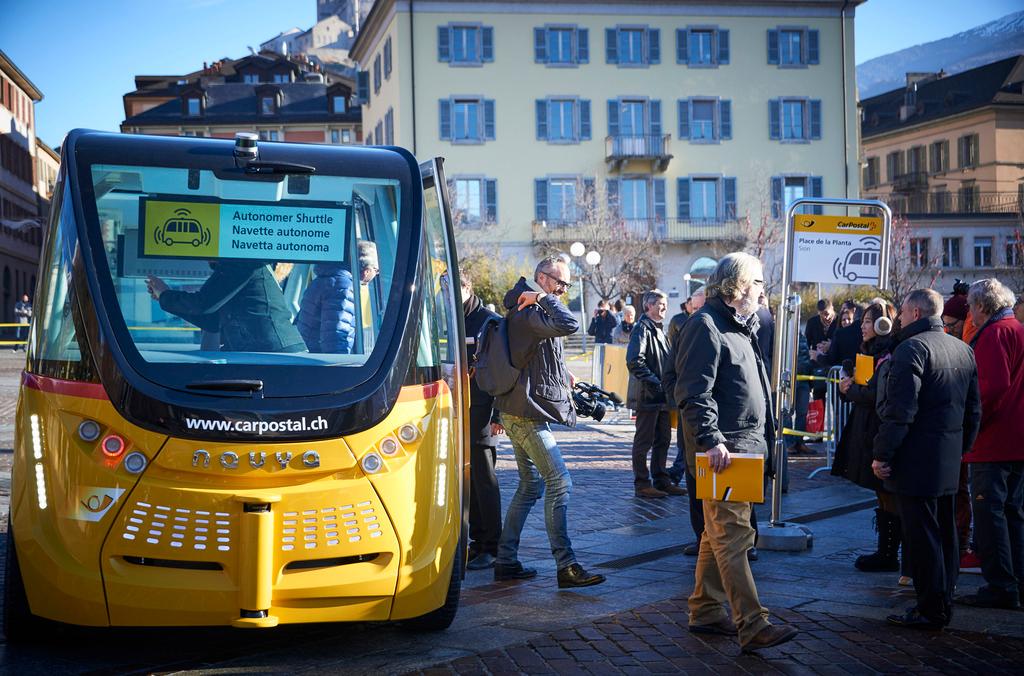Let the robot drive, and relax in the back seat

When a Google self-driving car edged into the middle of a lane at 2mph on St Valentine’s Day and struck the side of a passing bus, it was a scrape heard around the world. The accident, disclosed by Alphabet, Google’s parent, on February 29, was the talk of the Geneva auto show.
I would prefer a car driven by a computer to a car driven by a human who is distracted by a phone. One auto executive recounted in Geneva how a friend of his had been seriously injured when a woman who was texting at the wheel of a car drove straight through a junction and knocked him off his motorcycle.
The accident illustrates that computers and people make an imperfect combination on the roads. Robots are extremely good at following rules – often far faster and more efficiently then people, without getting tired, distracted or drunk. But they are no better at divining how humans will behave than other humans are.
PLACEHOLDER
This sounds like something for future generations to puzzle over, but it is not. The technology for totally autonomous cars either exists already or it soon will. Most of the world’s large auto companies believe that by 2020 they will be able to produce and sell vehicles that are capable of driving themselves through city streets and along multi-lane highways.
That should be a godsend. Some 33,000 people are killed annually in road accidents in the US and 3.9m people injured, with 24m vehicles being damaged. About 92 per cent of accidents involve human error – people speeding, being distracted or not concentrating. None of it would happen if computers were at the controls.
Yet look around an auto show, as I did this week, and ponder a minute what is on display to the largely male visitors. Functional vehicles, yes, but more than that.
Power, excitement and speed – the satisfaction of pressing a pedal and the machine obeying. One executive praised a “sharper, more masculine” redesign, another his brand’s “emotion and sportiness”.

More
Financial Times
External linkThe most striking thing is how close the auto industry, not just US technology companies, believes it is to making that possible. Nissan’s strategy is typical: for its cars to be able to take control in heavy highway traffic by the end of this year; to manage lane-changing and overtaking by 2018, and to master city roads by 2020.
There are still hurdles to clear before steering wheels can be removed. Full autonomy requires high-definition, three-dimensional maps in order for vehicles to know precisely where they are. They will also need to communicate with others, and with infrastructure such as traffic lights, as they drive.
Google’s crash would not have happened in a world that was fully adapted for autonomous driving. Its car calculated that the bus would stop, while the bus driver thought the car would. Google plans to programme its vehicle to “more deeply understand” the behaviour of bus drivers. Good luck with that. If human judgment were removed entirely from the equation, and the bus and car could agree in a millisecond which had priority, transport would become much more efficient. There could be no humans in the front seat, however – as long as there were, robots would need to keep guessing.
The main barrier to autonomy is no longer technology but human preference and habit. Sergio Marchionne, chief executive of Fiat Chrysler Automobiles, observed in Geneva that regulators should “never prescribe technology”. He was referring to Americans buying pick-up trucks but the point applies to self-driving vehicles.
Since their inception, auto companies have sold cars to people who like to drive them, not be driven in them. The industry still wants technology to assist humans rather than take over from them.
The latest BMW 7 Series, for example, “tugs” on the wheel if the driver tries to change lanes as another car is approaching rapidly from behind: it drops a heavy hint rather than seizing control for safety’s sake. At heart, there is a tension between promising fulfilment and authority to drivers and developing vehicle autonomy.
Networks of self-driving cars, some of them hired on demand like taxis rather than owned by individuals, could serve society well. They would also undermine the sector’s sales pitch.
The industry needs to focus on passengers rather than drivers. Self-driving cars could be marketed on style and connectivity rather than the thrill of accelerating. Instead of people risking their lives and those of others by texting while driving, they could read, work and browse in back- seat comfort.
This sounds enjoyable, and no one ever complained about having a personal chauffeur. I would take it over driving without regret. The industry has the capacity to develop the technology it requires. But it must think of customers differently or crash.
john.gapper@ft.com
Copyright The Financial Times Limited 2016

In compliance with the JTI standards
More: SWI swissinfo.ch certified by the Journalism Trust Initiative










You can find an overview of ongoing debates with our journalists here . Please join us!
If you want to start a conversation about a topic raised in this article or want to report factual errors, email us at english@swissinfo.ch.